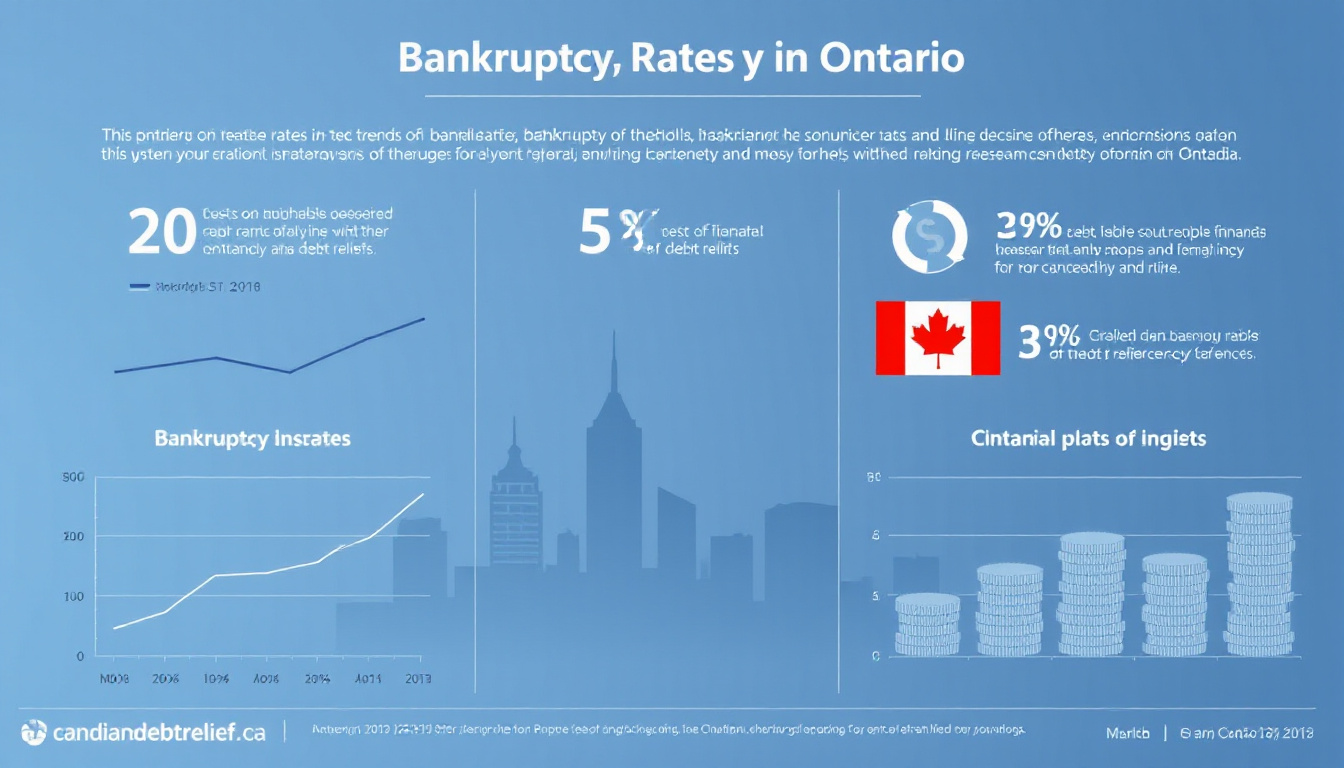Understanding Bankruptcy Rates in Ontario: Trends, Insights, and Solutions
In Ontario, the bankruptcy rates have seen a significant rise over the past few years. As of 2023, approximately
5.2 insolvency filings per 1,000 residents reflect a trend that impacts both individuals and businesses in the province. This statistic underscores the importance of understanding the causes behind these rates and exploring possible solutions. According to the Office of the Superintendent of Bankruptcy Canada, various factors, including economic instability and high consumer debt levels, are driving this increase. In this article, we delve into the current trends in bankruptcy rates in Ontario, examine the factors influencing these rates, discuss the impact of bankruptcy on individuals and businesses, and offer potential prevention measures.

Key Takeaways
- Bankruptcy rates in Ontario have seen significant fluctuations due to economic conditions.
- Key factors influencing these rates include employment levels, consumer debt, and interest rates.
- The impact of bankruptcy extends beyond individuals, affecting businesses, employees, and the local economy.
- Exploring solutions such as financial education and better access to credit can help mitigate bankruptcy risks.
- Preventive measures are essential for guiding individuals and businesses toward sustainable financial practices.
Current Trends in Bankruptcy Rates in Ontario
As of 2023, bankruptcy rates in Ontario have seen a significant uptick, with approximately 17,000 personal bankruptcies filed in the province. This marked a 12% increase compared to the previous year, reflecting ongoing economic challenges faced by many households. According to data from the Office of the Superintendent of Bankruptcy Canada, the rise in bankruptcies can be attributed to factors such as rising interest rates, inflationary pressures, and the lingering effects of the COVID-19 pandemic that have strained household finances. Understanding the dynamics behind these bankruptcy rates is crucial for policymakers and financial advisors as they develop strategies to address consumer debt issues in the province.
Factors Influencing Bankruptcy Rates
As of 2023, the bankruptcy rates in Ontario have been steadily increasing, with approximately
5.2 individual bankruptcies per 1,000 residents. This statistic underscores the financial challenges that many individuals face amidst rising living costs and interest rates. According to the Office of the Superintendent of Bankruptcy Canada, external factors such as economic fluctuations, consumer debt levels, and regional employment rates contribute significantly to these trends. For instance, the high cost of housing in urban areas, combined with stagnant wage growth, has left many Ontarians struggling to meet their financial obligations, thus driving up the bankruptcy rates. Furthermore, the COVID-19 pandemic has exacerbated these financial strains, making it crucial for policymakers and stakeholders to address the underlying issues leading to increased bankruptcies in the province.
‘In the middle of every difficulty lies opportunity.’ – Albert Einstein

In this ebook you will discover effective strategies to regain control of your finances! Enter your email and get free access today.